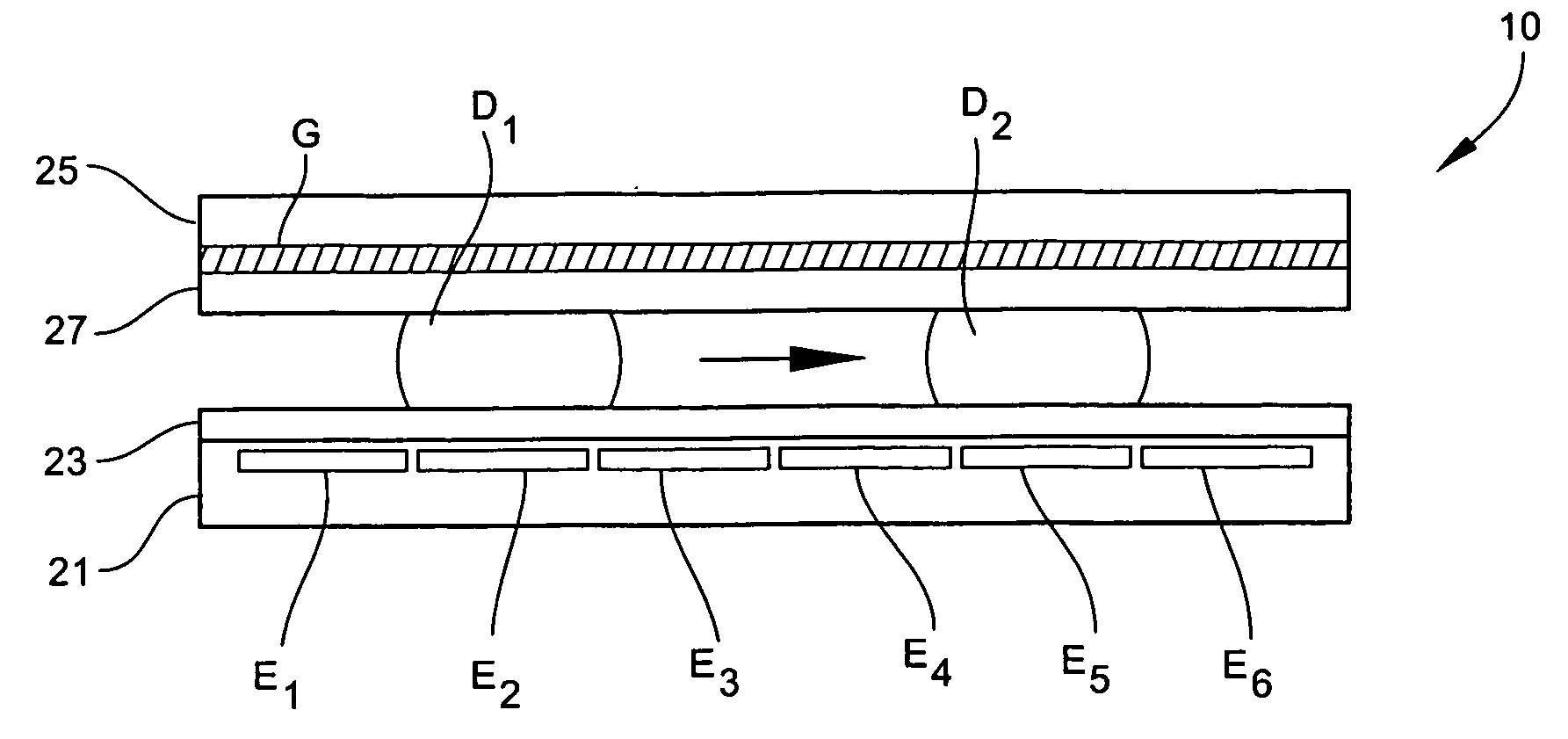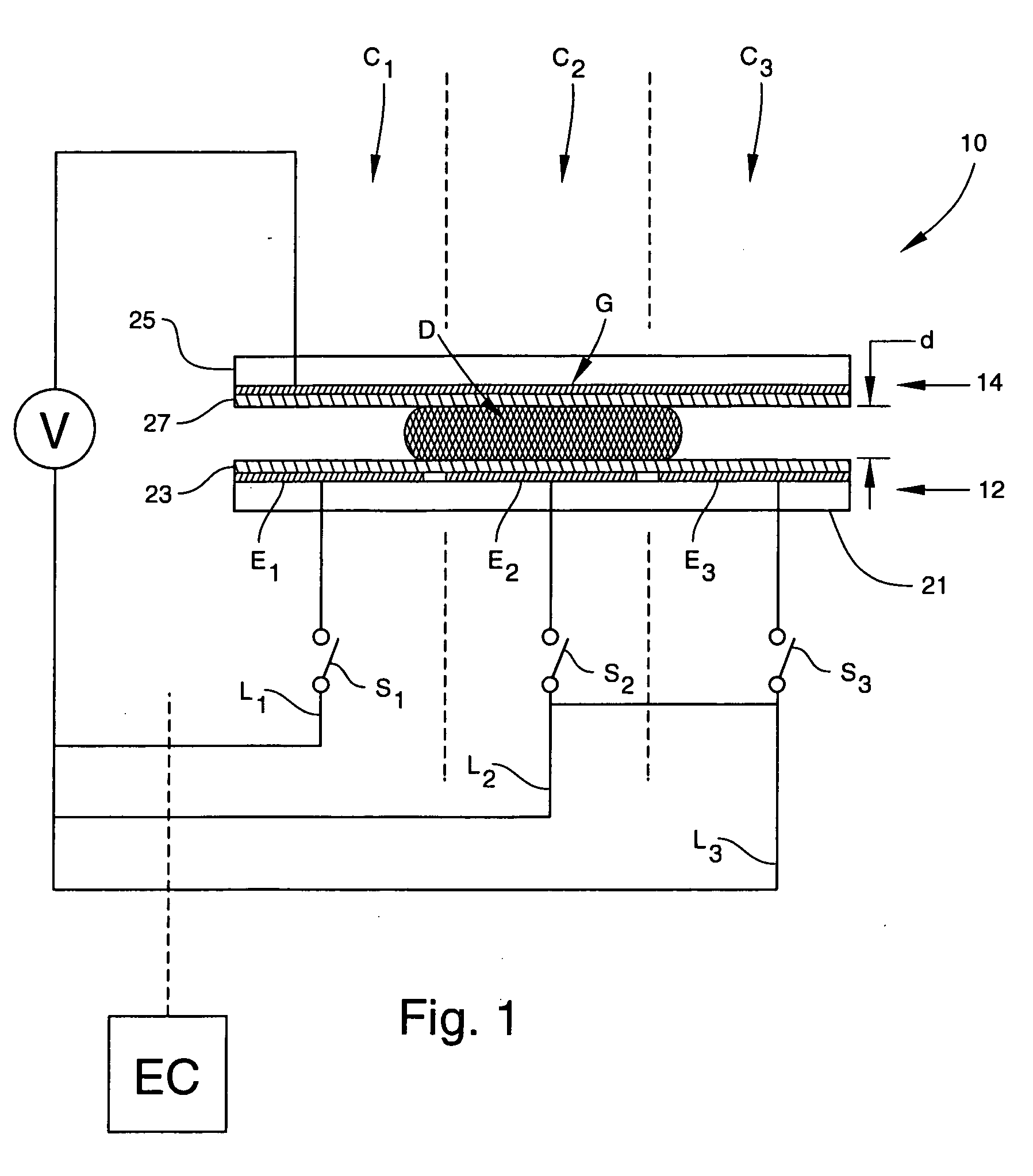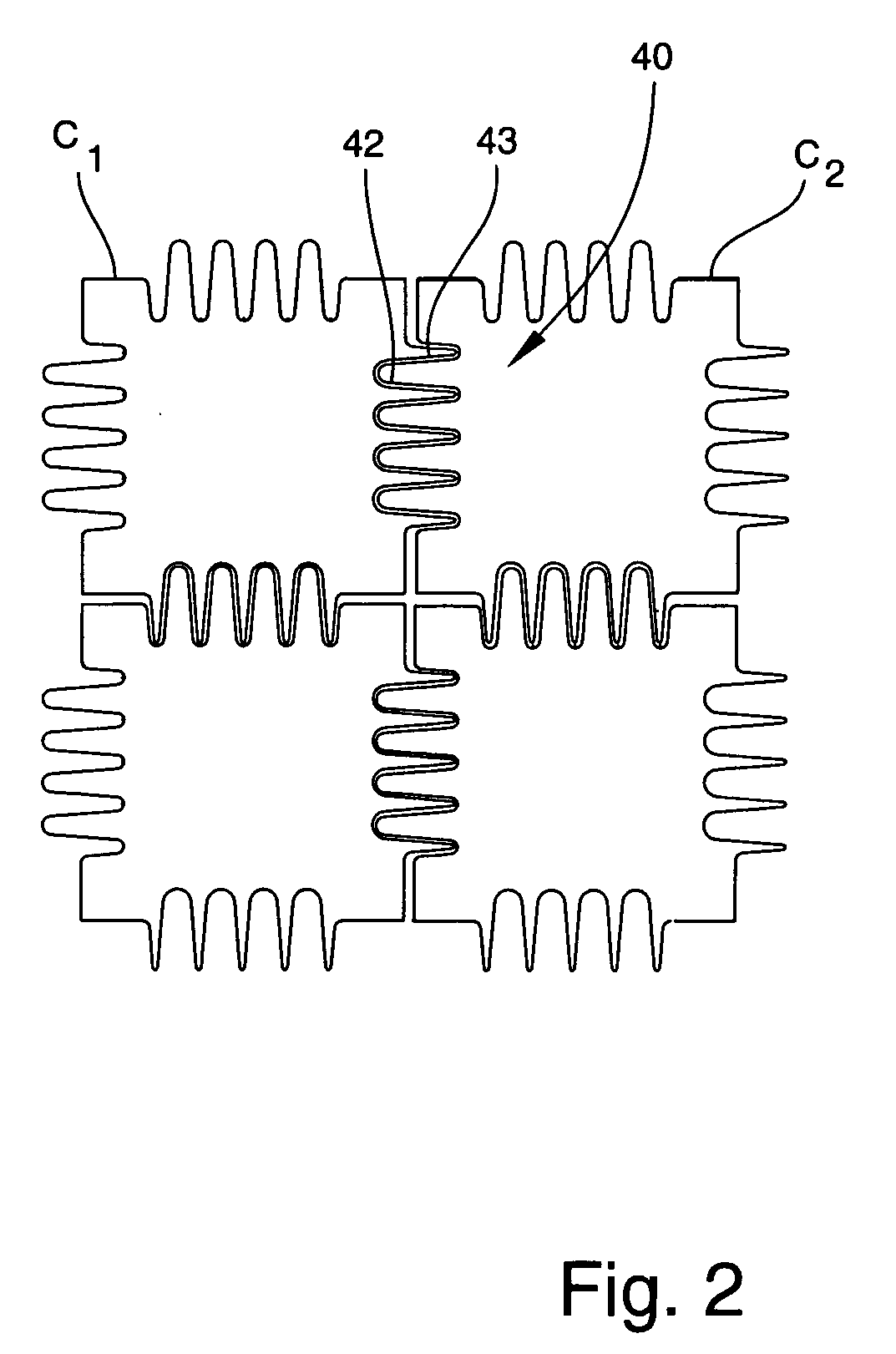Methods for manipulating droplets by electrowetting-based techniques
a droplet and electrowetting technology, applied in the field of droplet-based liquid handling and processing, can solve the problems of high mixing difficulty, crosstalk or contamination between sensors, and affecting chip design and system flow rate, etc., and achieves high throughput capability, improved controllability, and high mixing accuracy.
- Summary
- Abstract
- Description
- Claims
- Application Information
AI Technical Summary
Benefits of technology
Problems solved by technology
Method used
Image
Examples
example
[0091] A prototype device consisting of a single linear array of seven interdigitated control electrodes E at a pitch of 1.5 mm was fabricated and tested. Control electrodes E were formed by patterning a 2000-Å thick layer of chrome on a glass lower plate 21 using standard microfabrication techniques. The chips were then coated with a 7000 Å layer of Parylene C followed by a layer 23 of approximately 2000 Å of TEFLON® AF 1600. Ground electrode G consisted of an upper plate 25 of glass coated with a conducting layer (R7027 of TEFLON® AF 1600 was also applied to ground electrode G. The thin TEFLON® coating on ground electrode G served to hydrophobize the surface, but was not presumed to be insulative. After coating with TEFLON®, both surfaces had a contact angle of 104° with water.
[0092] Water droplets (0.7-1.0 μl) of 100 mM KCl were dispensed onto the array using a pipette, and upper plate 25 was positioned to provide a gap d of 0.3 mm between the opposing electrodes E and G. A cust...
PUM
| Property | Measurement | Unit |
|---|---|---|
| size | aaaaa | aaaaa |
| size | aaaaa | aaaaa |
| contact angle | aaaaa | aaaaa |
Abstract
Description
Claims
Application Information
 Login to View More
Login to View More - R&D
- Intellectual Property
- Life Sciences
- Materials
- Tech Scout
- Unparalleled Data Quality
- Higher Quality Content
- 60% Fewer Hallucinations
Browse by: Latest US Patents, China's latest patents, Technical Efficacy Thesaurus, Application Domain, Technology Topic, Popular Technical Reports.
© 2025 PatSnap. All rights reserved.Legal|Privacy policy|Modern Slavery Act Transparency Statement|Sitemap|About US| Contact US: help@patsnap.com



